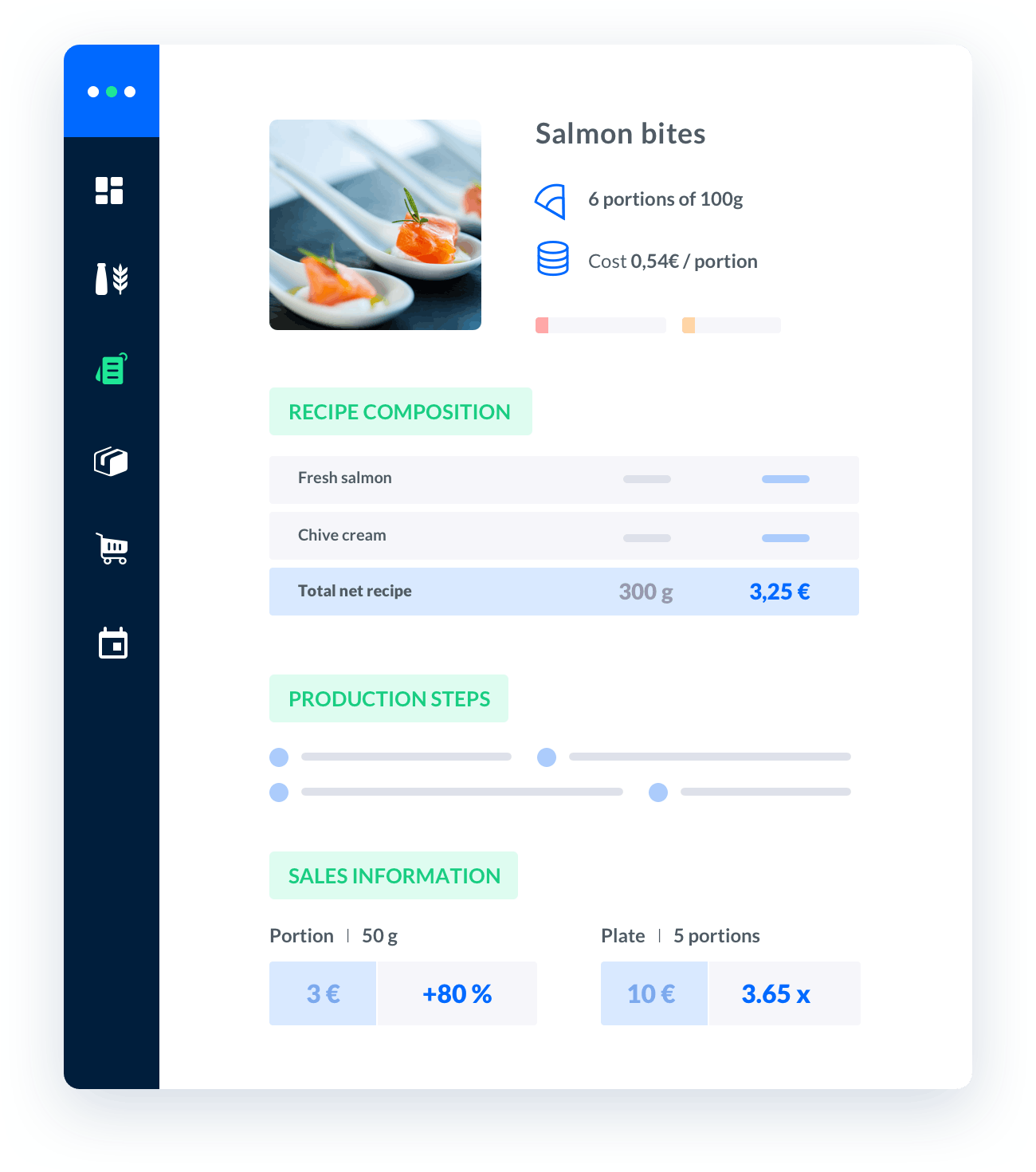fixed costs for a restaurant
Fixed costs are a crucial aspect of running a restaurant business.Understanding and effectively managing these costs is essential for the long-term success and profitability of your establishment.

Melba: the food cost app to optimize the profitability of your restaurant
Discover how to optimize the profitability of your restaurant with melba

The ultimate guide to food cost restaurant
Learn more about the food cost basis and how to reduce your food cost percentage
Fixed costs are a crucial aspect of running a restaurant business. Understanding and effectively managing these costs is essential for the long-term success and profitability of your establishment. In this article, we will explore the various fixed costs that a restaurant typically incurs and provide valuable insights on how to optimize them.
The Importance of Fixed Costs in the Restaurant Industry
Fixed costs, also known as overhead costs, are expenses that remain constant regardless of the level of business activity. These costs are vital to consider as they directly impact a restaurant's financial stability and profitability. By carefully managing and minimizing fixed costs, restaurant owners can achieve better control over their finances and improve their bottom line.
1. Rent and Lease Expenses
Rent and lease expenses are one of the significant fixed costs for restaurants. The cost of leasing or renting a space for your establishment can vary depending on the location, size, and demand. It is important to negotiate favorable terms and ensure that the rental agreement aligns with your business goals.
Effective strategies to optimize rent and lease expenses include:
- Conducting thorough research to identify areas with lower rental rates without compromising on the target customer base and accessibility.
- Negotiating lease terms, such as rent escalations, renewal options, and maintenance responsibilities.
- Exploring shared kitchen spaces or collaborating with other local businesses to reduce rental costs.
2. Utilities and Energy Costs
Utilities and energy costs, including electricity, gas, water, and waste management, are another significant fixed expense that every restaurant must bear. Implementing energy-efficient practices can help reduce these costs and contribute to a more sustainable operation.
Here are some effective strategies to optimize utilities and energy costs:
- Installing energy-efficient appliances and equipment, such as LED lighting, low-flow faucets, and Energy Star-rated appliances.
- Regularly maintaining and servicing equipment to ensure optimal performance and minimize energy wastage.
- Training staff on energy-saving practices, such as turning off lights and equipment when not in use and monitoring water usage.
Managing Staff Costs
Staff costs, including wages and benefits, represent a significant portion of fixed costs for restaurants. Efficiently managing these costs is essential to maintain a productive workforce while ensuring profitability.
1. Labor Optimization
Optimizing labor costs involves strategically scheduling staff members based on anticipated customer demand, reducing overtime hours, and minimizing unnecessary labor expenses.
Here are some strategies to manage and optimize labor costs:
- Implementing a robust workforce management system that helps forecast labor needs based on historical data and market trends.
- Cross-training employees to perform multiple roles, allowing for increased flexibility and reduced reliance on specialized staff.
- Regularly reviewing staffing levels to ensure optimal staffing without overstaffing during slow periods.
2. Training and Development
Investing in staff training and development not only enhances the skills and expertise of your workforce but also improves employee satisfaction, reducing turnover rates and associated recruitment costs.
Consider the following strategies for effective training and development:
- Providing comprehensive initial training and ongoing professional development opportunities to enhance employees' skills and knowledge.
- Offering cross-training programs that allow staff members to gain knowledge in different areas of the restaurant, increasing their versatility.
- Encouraging employees to attend industry conferences, workshops, and seminars to stay updated with the latest trends and best practices.
Optimizing Inventory and Food Costs
Managing inventory and food costs is crucial for maintaining profitability in the restaurant industry. By implementing efficient inventory control practices, you can minimize waste, reduce food costs, and enhance overall operational efficiency.
1. Inventory Management
Implementing a robust inventory management system helps you keep track of stock levels, prevent over-ordering or understocking, and identify potential areas of waste or theft.
Consider the following strategies for effective inventory management:
- Utilizing inventory management software to automate stock tracking, streamline ordering processes, and generate accurate reports.
- Regularly conducting inventory audits to identify slow-moving items, eliminate excess stock, and identify theft or pilferage.
- Establishing strong relationships with trusted suppliers to negotiate better prices, bulk discounts, and favorable payment terms.
2. Menu Engineering
Menu engineering involves strategically designing your menu to maximize profitability by focusing on high-margin items, minimizing food waste, and optimizing ingredient usage.
Consider the following strategies for effective menu engineering:
- Analyzing sales data to identify the most popular and profitable menu items.
- Adjusting pricing and portion sizes to increase profitability without compromising customer satisfaction.
- Regularly reviewing and updating the menu to incorporate seasonal and cost-effective ingredients.
By effectively managing fixed costs, optimizing staff expenses, and implementing efficient inventory control practices, restaurant owners can improve their financial stability and profitability. It is crucial to regularly review and adapt these strategies to align with changing market dynamics and industry trends.
Remember, every restaurant is unique, and what works for one establishment may not work for another. Therefore, it is essential to analyze your specific situation, consult with industry professionals, and tailor these strategies to suit your business needs.






